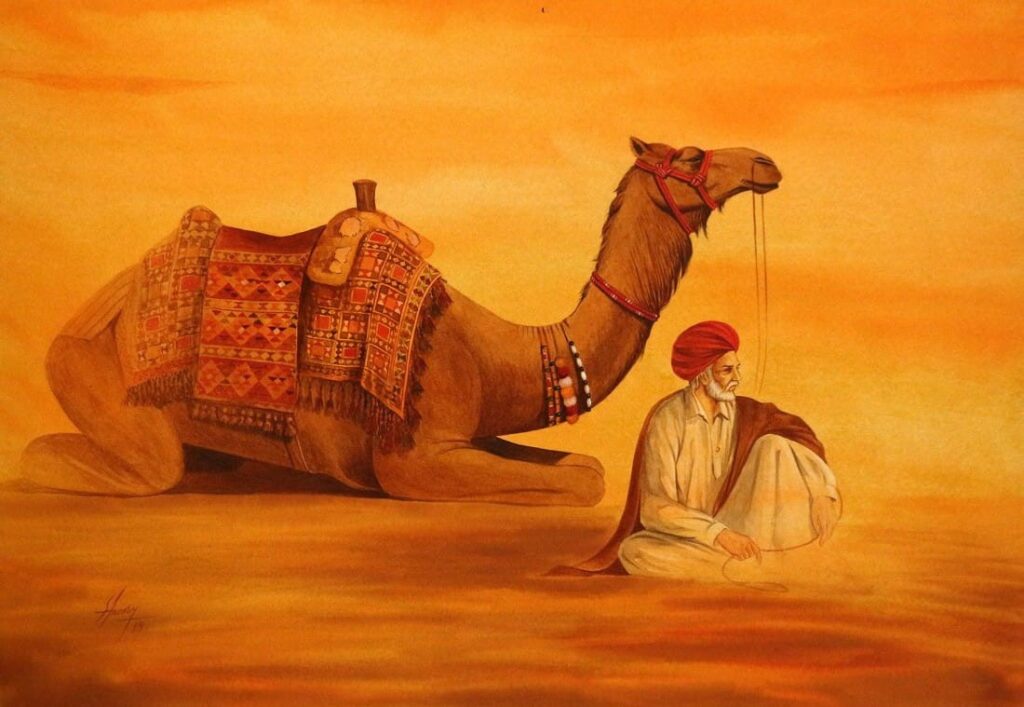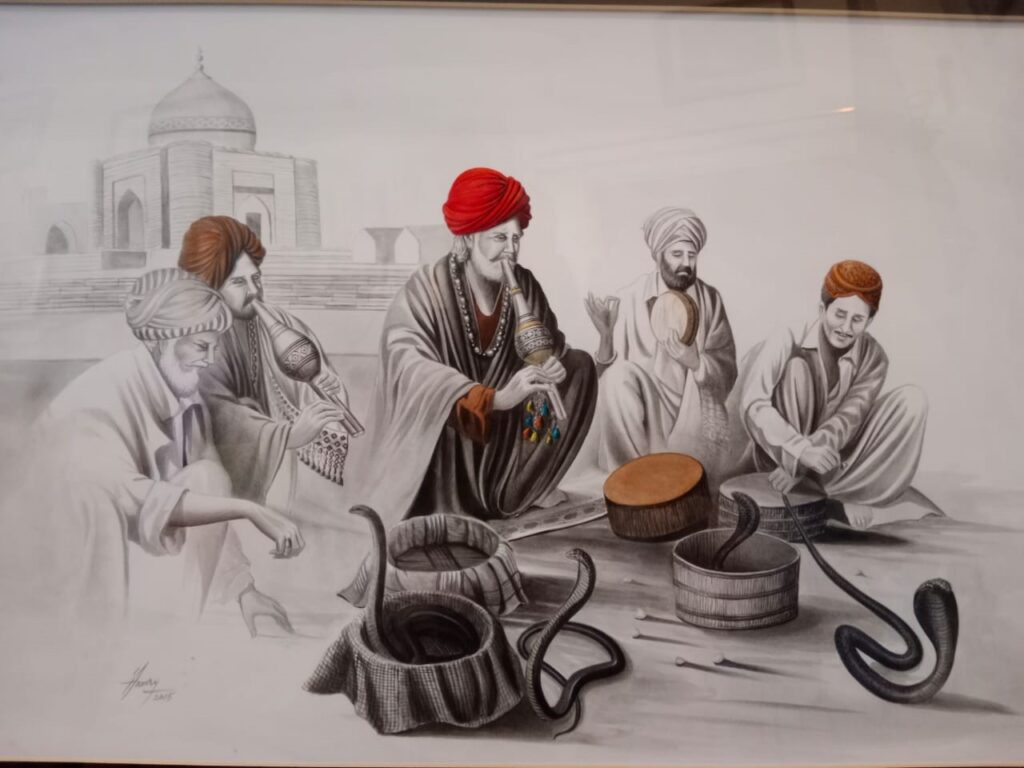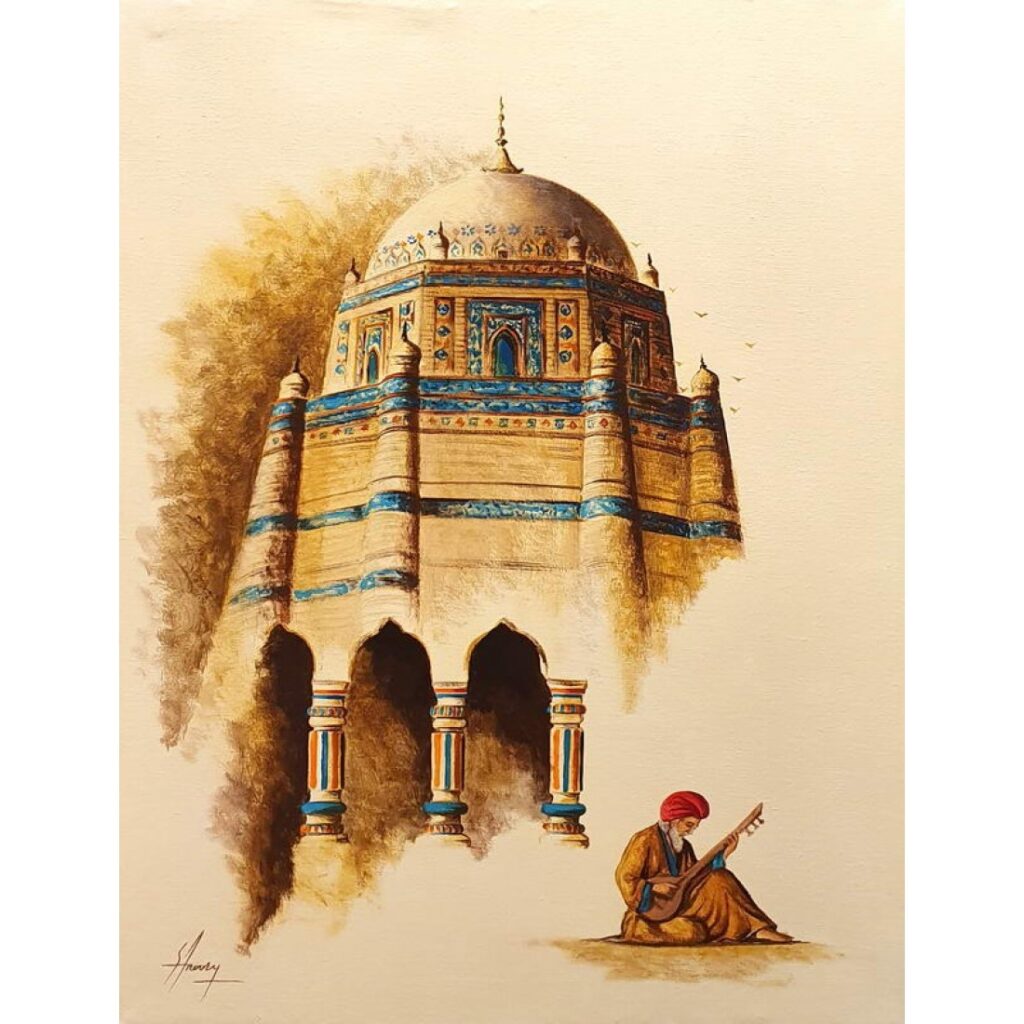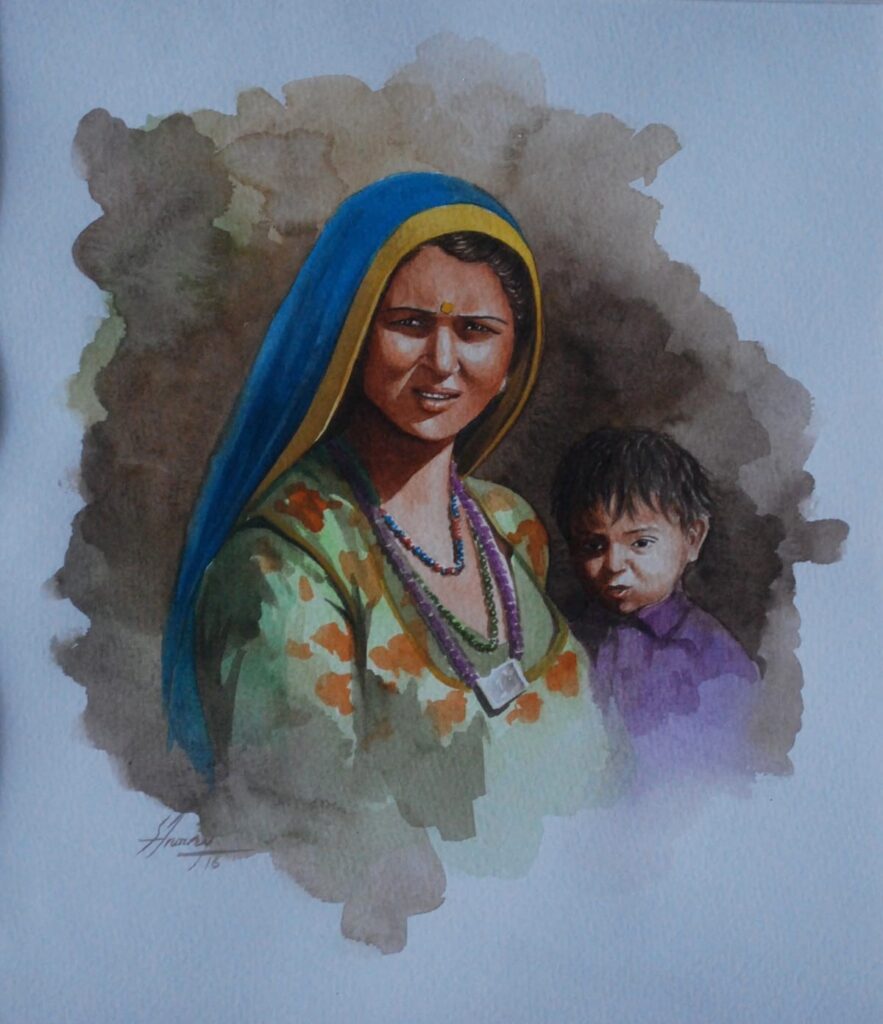Art
From Miniatures to Mysticism

S.A. NOORY
Art is a form of expression that allows artists to convey their emotions and feelings through their creations. Each artist has their own unique journey and experiences that have led them to their preferred style and message. It is fascinating to learn about how different artists merge their spiritual beliefs with their artistic practice to create meaningful pieces of art. S.A. Noory started as a miniature artist, and through the years mysticism and symbolism have become the focus of his art.


How did you become interested in art?
SA: As a child, our love for sketching and drawing often goes unnoticed until someone helps us realize our potential as was the case with me. I was in 7th grade, when I discovered my extraordinary skills in art during my participation in an art competition being held at Arts Council Karachi by UNICEF, where I secured first position among 400 participants. This was the defining moment that sparked my interest towards pursuing arts and since then, there has been no turning back.
What drew you towards Sufi-inspired art?
SA: The stories of the Sufis, their devotion, and the message of spreading peace among people has always inspired me. As an artist, I believe that it is our responsibility to spread positivity through our work, and it was only natural for me to merge my spiritual beliefs with my art practice.
What techniques and materials do you employ in creating your works?
SA: I have worked with various mediums over the years, but I enjoy working with watercolors and acrylic paints. Currently, I am working with acrylic paints on canvas.
Have you faced any challenges in merging your spiritual beliefs with your artistic practice? How have you overcome them?
SA: Fortunately, I have not faced any major challenges in merging my spiritual beliefs with my artistic practice. Sufism is a universal message of love and peace, and I have been fortunate enough to receive positive feedback from my clients.

Who are your artistic influences?
SA: I have been inspired by many orientalist painters like Edwin Lord Weeks and Rudolf Ernst, who traveled to Asia to work on Muslim culture and monuments. Their skills left a profound impact on me greatly influencing my work.
What personality trait do you have that has been most helpful and what are your accomplishments in your art career?
SA: I think having a strong observation and being my own critic has helped me a lot. I would say that my ability to observe and critically analyze my work has allowed me to improve my art consistently. As an artist, the most significant accomplishment for me is the ability to express my emotions through paintings. I am proud of my ability to spread positivity through art and the love and support I have received from the art enthusiasts over the years.
What is your favourite piece of work you have created and why?
SA: It is very difficult to say because every piece of art has its own uniqueness and beauty. But I must say my favorite is “The Series of Sufism” because it conveys the message of peace to the world.
Do you have any really memorable reactions to your work that you’d like to share?
SA: Every artist puts their heart and soul into their work, hoping to touch the lives of others with their creations. One particular client’s heartfelt message still remains green in my memory. They expressed, “Whenever I see your painting, I feel peacefulness, keep on spreading this message of peace.” It was in that moment I realized the impact my art had on others, and it affirmed my belief that I was contributing to something meaningful.

What do you think makes your work unique?
SA: What sets my work apart is the process I undertake before creating a painting. Prior to translating my vision onto the canvas, I sketch freely, allowing my lines to flow without constraints. This approach gives my work a unique sense of freedom and movement, capturing the raw essence that distinguishes it from others.
How has your art evolved over time?
SA: Throughout my artistic journey, my work has undergone a transformative process, growing more mature and thoughtful. As I continue to explore different mediums, techniques and themes, my ability to convey emotions and messages through my art has gained a deeper meaning.
What role do you think the artist has in today’s society?
SA: There is a dire need of patience and peace in our society and I believe artists, through their creations, have the power to communicate, inspire and spread love and patience through their art and help inculcate these values among the individuals.
Is AI killing creativity?
SA: When it comes to visual art, I believe AI cannot kill creativity. Instead, it lends a helping hand to graphic designers. Just as the advent of color printers initially raised concerns about the devaluation of original paintings, the role of AI in the artistic world is complementary. AI aids in the creative process providing designers with new tools and possibilities, while the artist’s unique imagination and personal touch continue to breathe life into each creation.
If you mentored younger artists who are beginning their art careers, what would be your advice to them?
SA: Just one advice and that is do not keep on copying other artists. Try to make your own style and do something new which represents you. Dare to explore your unique style, daring to create something entirely new and let your artwork be a beautiful testament to your individuality.
What’s next in your artistic realm? Are there any upcoming projects or exhibitions that you are excited about?
SA: Whenever I do something new I try to make a series of that and exhibit. I am excited to finish my new paintings and have a solo show again.
Going forward, my artistic realm takes shape as I embark on new projects and embrace upcoming exhibitions. With each new artistic endeavor, I strive to create a series that encapsulates a distinct theme or emotion.
What message do you want to convey through your art?
SA: The primary message I want to convey through my art is the message of peace. The message of Sufism is a beautiful and much-needed message for society and the world as a whole.



